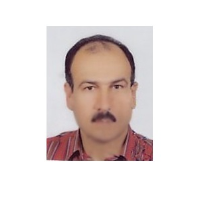Soil-inhabiting Mesostigmatic Mites (Acari) of Mashhad County, Razavi Khorasan Province of Iran
Author(s):
Abstract:
Introduction
The order Mesostigmata is a large, diverse and cosmopolitan assemblage of parasitiform mites. Most of them are free-living predators, and many species are parasites orsymbionts of mammals, birds, reptiles, or arthropods. Because they may play an important role in essential functions of soil mesofauna communities, this group of mites may be used as bioindicators of environmental changes. Due to their high diversity and often great numbers, they are integrally involved in many ecological interactions. In the last few decades, they have gained an increasing interest in the context of bioindication, pests and pest control, decomposition, and human health. Lindquist et al. (2009) divided the order into three suborders as Monogynaspida, Trigynaspida, and Sejida. There are about 12000 species belonging to approximately 70 families which grouped into 26 superfamilies in the world. In terms of Mesostigmatid mite fauna of Iran, Kazemi & Rajaei (2013) reviewing the literature, reported that mesostigmatid mites in Iran (excluding the family Phytoseiidae) consist of 348 species belonging to 128 genera, 39 families, and 17 superfamilies. Compared with the world fauna, it is obvious that the Iranian list of Mesotigmata is far from real number and this list can be increased by further investigation in unexplored areas.Materials And Methods
This study investigated assemblages of Mesostigmatid mites inhabiting soil in different agro- ecosystems in Mashhad county, Razavi Khorasan province, Iran. Soil samples were collected from different areas with differing vegetation communities in the region. A total of 300 soil samples were taken from October 2014 to November 2015. The samples, including the soil, manure, and leaf composts collected from an area of about 40 cm2 and depth of up to 15 cm. Mites were extracted from soil samples by using Berlese-Tullgren funnel with a 40 W bulb which was lasted 48 h for each sample. The collected specimens were cleared in Nesbitts fluid and mounted as permanent slides using Hoyers medium. Primarily identification was done by authors, but all reported species in this study were sent for identification or confirmation to Drs O. Joharchi (Azad University of Yazd, Iran), H. Ostovan ( Azad Univerisity of Marvdasht, Shiraz, Iran) & Sh. Kazemi (Institute for Science and High Technology and Environmental Sciences, Graduate University of Advanced Technology, Kerman). Samples of all mites were deposited in the mite collection of the Department of Plant Protection, College of Agriculture, Ferdowsi University of Mashhad, Iran.Results
The present survey of mesostigmatic mites (Acari: Mesostigmata) inhabiting soil in Mashhad county, Razavi Khorasan province which carried out during October 2014 to November 2015 resulted in a total of 20 mesostigmatic mite species belonging to 16 genera and nine families. The list of identified species is as follows: Ameroseidae: Ameroseius plumosus*(Oudemans, 1902), A.parplumosus*(Nasr & Abou-Awad, 1986); Ascidae: Arctoseius cetratus(Sellnick, 1940); Halolaelapidae: Halolaelaps sp.; Laelapidae: Gaeololaelaps asperatus (Berlese, 1904), G.angustus (Karg, 1965), G.queenslandicus (Womersley, 1956), G.sclerotarsus (Costa, 1968), Laelaspisella canestrinii* (Berlese, 1903), Haemolaelaps casalis (Berlese, 1887); Macrochelidae: Macrocheles glaber *(Müller, 1860); Melicharidae: Proctolaelaps pygmaeus(Müller, 1859); Pachylaelapidae: Onchodellus karawaiewi **(Berlese, 1920), Pachylaelaps sp.Parasitidae: Parasitus fimetorum **(Berlese, 1904), P.consanguineus (Oudemans & Voigts, 1904), Pergamasus falculiger *(Berlese, 1906); Rhodacaridae: Multidentorhodacarus denticulatus *(Berlese, 1920);Urodinychidae:Uroobovella marginata** (Koch, 1839);Uropodidae: Uropoda orbicularis* (Müller, 1776). Among the identified species in this study, 7 species including Ameroseius plumosus (Oudemans), Ameroseius parplumosus (Nasr & Abou-Awad), Laelaspisella canestrinii (Berlese), Macrocheles glaber (Müller), Pergamasus falculiger (Berlese), Multidentorhodacarus denticulatus (Berlese), Uropoda orbicularis (Müller) were new records for Razavi Khorasan province. In addition, 3 species, namely Onchodellus karawaiewi ((Berlese), Parasitus fimetorum (Berlese), and Uroobovella marginata (Koch) were new records for Mashhad county.Conclusion
Mite fauna listed for Iran do not sufficiently indicate the real number. The results presented have added nine new species record to the fauna of the study area, so now the number of mesostigmatic mites (excluding family Phytoseiidae) of Razavi Khorasan has reached to at least 54 species. As many parts of the province have not been explored faunistically, with further research in different parts of the province, the recorded mite species will be considerably increased. Not only more faunistic studies are required further research on the biology and ecology of the recorded species is suggested.Keywords:
Language:
Persian
Published:
Journal of plant protection, Volume:30 Issue: 4, 2017
Pages:
744 to 753
magiran.com/p1671609
دانلود و مطالعه متن این مقاله با یکی از روشهای زیر امکان پذیر است:
اشتراک شخصی
با عضویت و پرداخت آنلاین حق اشتراک یکساله به مبلغ 1,390,000ريال میتوانید 70 عنوان مطلب دانلود کنید!
اشتراک سازمانی
به کتابخانه دانشگاه یا محل کار خود پیشنهاد کنید تا اشتراک سازمانی این پایگاه را برای دسترسی نامحدود همه کاربران به متن مطالب تهیه نمایند!
توجه!
- حق عضویت دریافتی صرف حمایت از نشریات عضو و نگهداری، تکمیل و توسعه مگیران میشود.
- پرداخت حق اشتراک و دانلود مقالات اجازه بازنشر آن در سایر رسانههای چاپی و دیجیتال را به کاربر نمیدهد.
In order to view content subscription is required
Personal subscription
Subscribe magiran.com for 70 € euros via PayPal and download 70 articles during a year.
Organization subscription
Please contact us to subscribe your university or library for unlimited access!



